- | 8:00 am
NASA’s new supersonic jet goes so fast it can’t have a windshield. Here’s how pilots will fly it
‘Gear up, camera up, is going to be our checklist,‘ say the pilots.
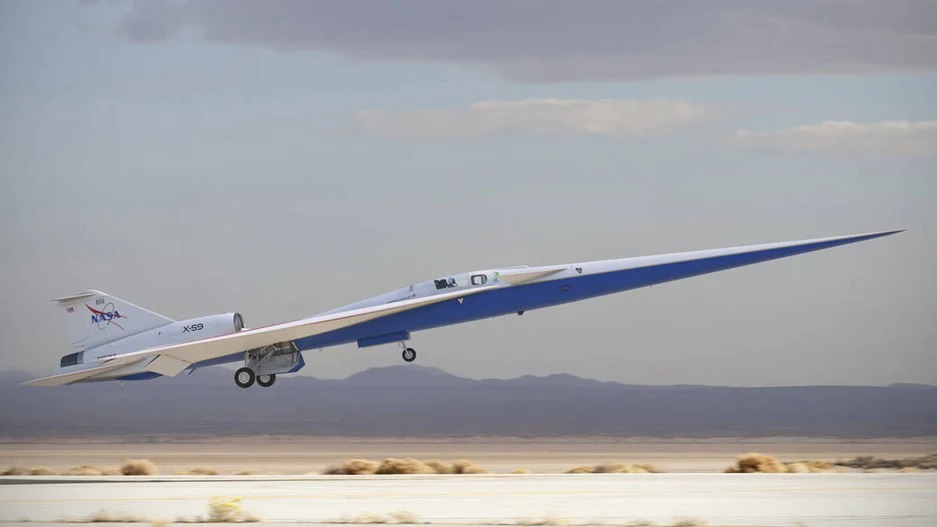
Today NASA is officially trotting out the finished version of an experimental aircraft that looks like a stretched-out arrowhead. Painted in red, white, and blue, the plane is called the X-59, and it has a lofty goal: to fly faster than the speed of sound over land, but do so in a quiet enough way that no one below is startled by a sonic boom. (You can watch the event here.)
The aircraft’s most noticeable feature is a nose that measures 38 feet long, which represents more than one-third of its total length of 99 feet and 7 inches. Tucked into a compartment behind that nose will be space for one pilot. But because the cockpit sits totally flush with the top surface of the aircraft—it’s embedded in the body of the plane—there is no forward windshield for the test pilot to look out of when they fly. Instead, they’ll fly using a camera system and a screen inside the cockpit to reveal what’s in front of them.
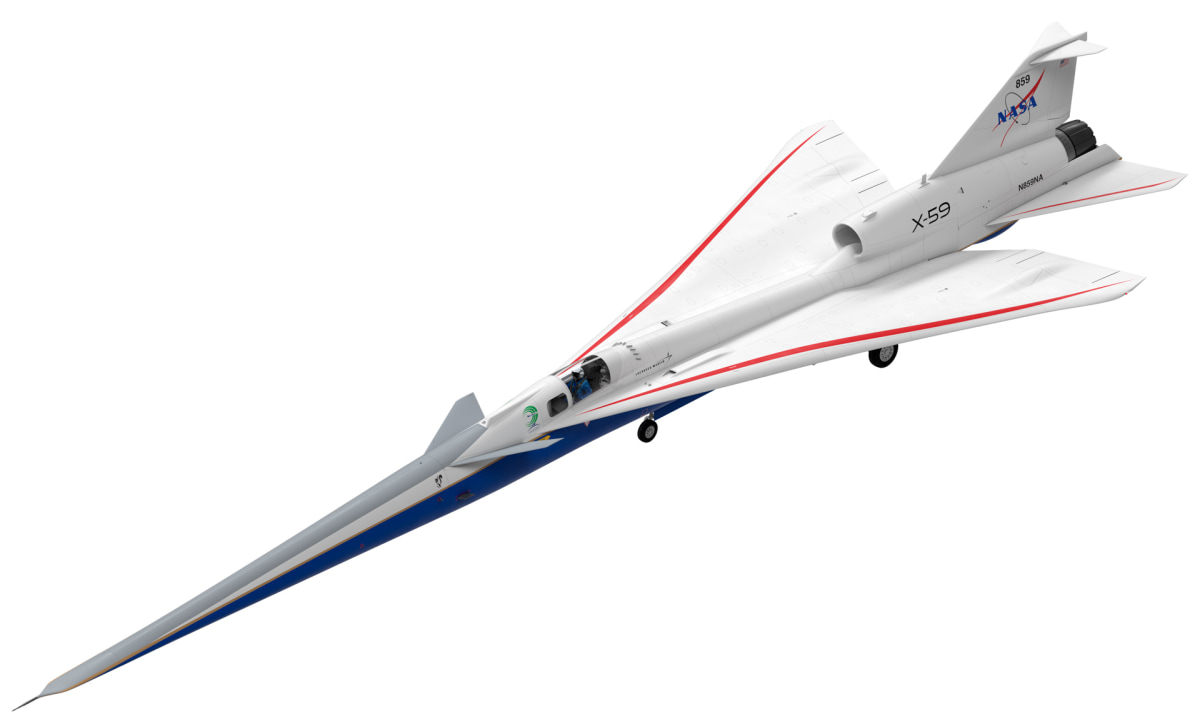
But the two NASA test pilots who will operate the X-59, which is made by Lockheed Martin, appear to be unfazed by the fact that they’ll be looking at a 4K monitor in front of them in lieu of a glass windshield. One reason for that is that the aircraft does have traditional windows in it—they just don’t provide a view directly forward. A glass canopy surrounds the pilot, allowing them to look up or side to side. And the plane does feature two other windows that could theoretically provide the pilot with a glimpse looking forward, although their view is blocked by a wing assembly in front of them called a canard. “We jokingly asked Lockheed if we could get the Wonder Woman mod,” says David Nils Larson, the lead test pilot, referring to Wonder Woman’s fictional invisible jet and the idea of a see-through metal canard. “They said yeah, ‘You don’t have that kind of money.’”
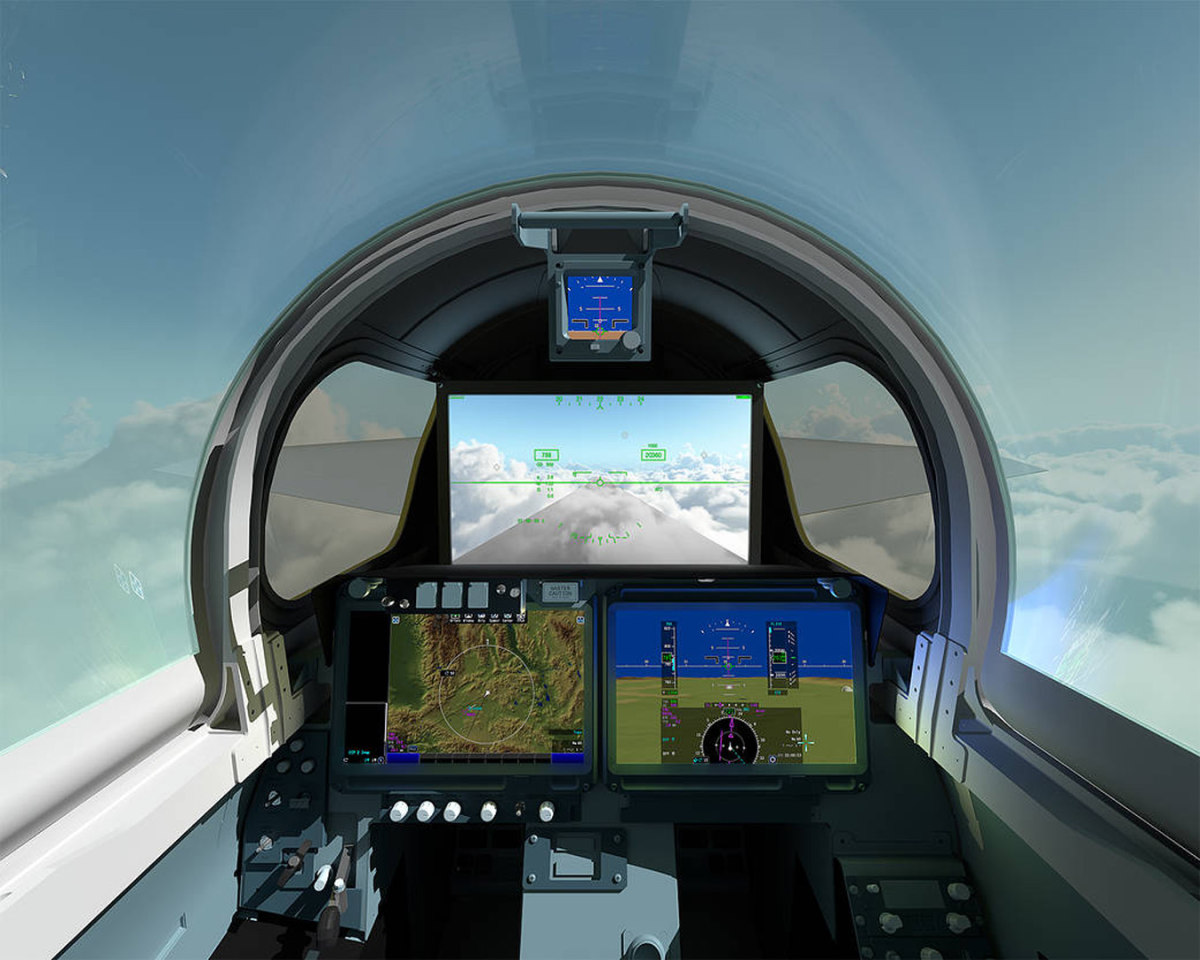
The pilots say they’re not worried about relying on the new external vision system, even if it were to malfunction. On the plane’s exterior are actually two different camera systems to send imagery to the screen in front of the pilot. One is a high-definition camera on top of the plane, which peers forward. The other is a retractable, lower-definition camera on the bottom that will look downwards and give the pilot a view of the runway as they land. If that camera protruded off the bottom of the plane for the entire flight, “that would affect the sonic boom that reaches the ground,” explains Jim Less, the other test pilot. So when the plane speeds up, the pilot also retracts the camera so it sits flush with the bottom of the plane. “Gear up, camera up, is going to be our checklist,” Less says, referring to raising the landing gear after takeoff.
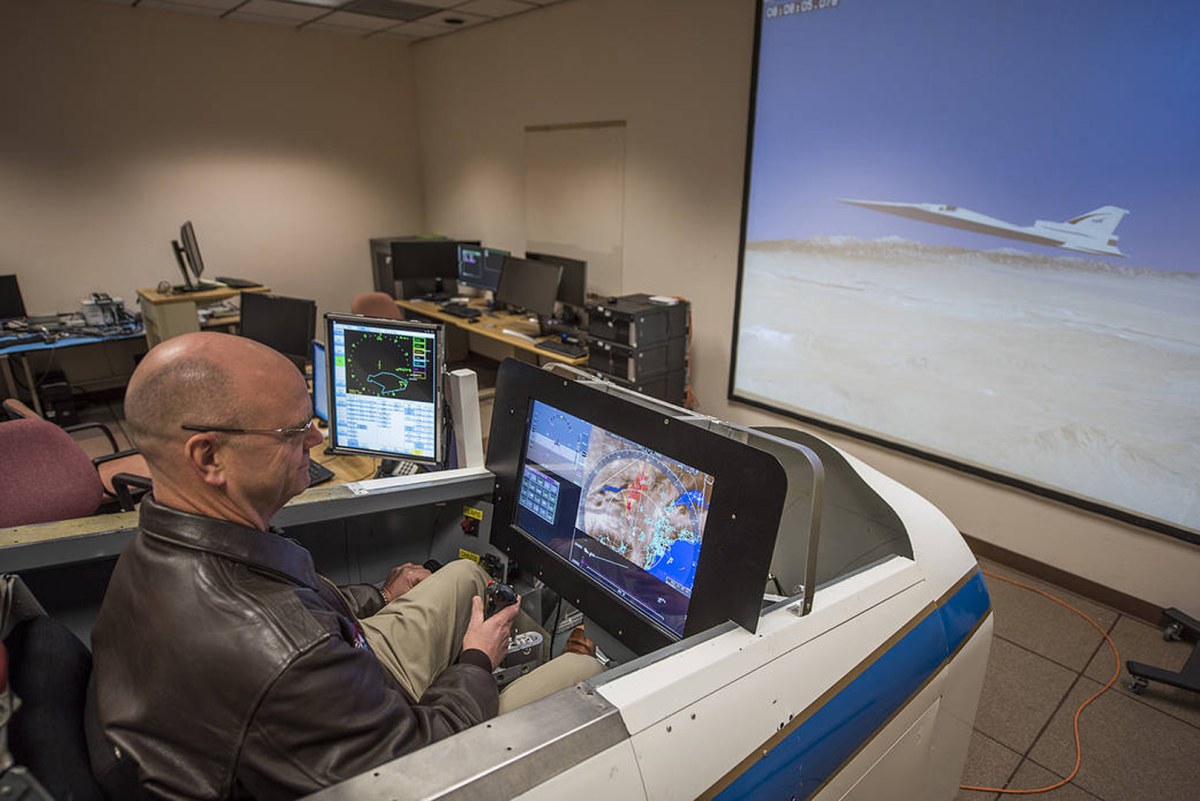
The reason for all of these unique design features—the cameras and absence of a forward windshield, the long nose, and other elements—is to ideally result in a jet that can slice through the atmosphere at supersonic speeds without producing much of a sonic boom below. Indeed, the aircraft went through multiple design iterations to reach its current form. When an aircraft breaks the sound barrier—which is around 660 miles per hour in an altitude range spanning around 36,000 feet to 65,600 feet—shockwaves form from air hitting the various physical points of a jet. Those shockwaves can combine to form two waves, one coming from the jet’s front, and the other its tail. The result for people on the ground is that they hear either a double sonic boom or just one, if the jet is small. Either way, nobody enjoys being startled by a loud boom, which is why supersonic flight for commercial aircraft isn’t allowed over land in the U.S., and hasn’t been for more than 50 years.
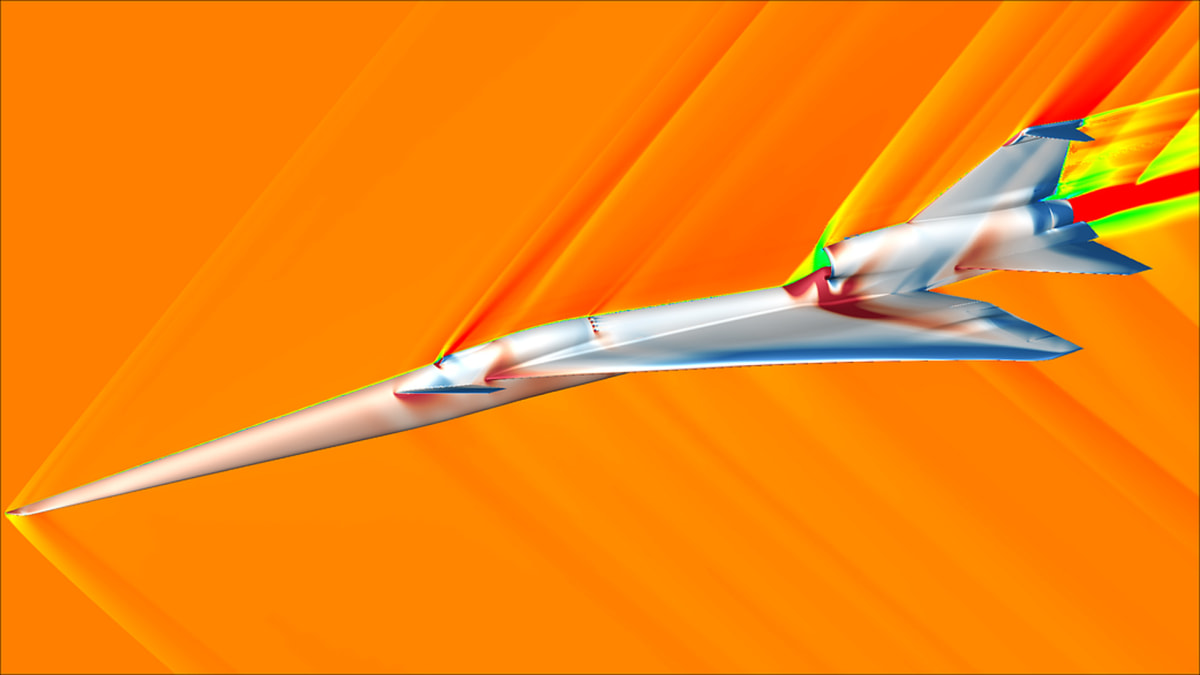
NASA hopes to begin to change that with the X-59, which will fly at speeds of about 925 miles per hour at an altitude of about 55,000 feet. The goal is for the jet to not produce a sharp booming sound, but instead just a “thump” sound, the space agency says. It will ideally accomplish that because the shockwaves emanating from the jet (here’s a visualization) will not combine in a dramatic way. “That 38-foot nose that we have means that there’s a pretty good space in between that initial nose shock, and the next shock that’s going to be created,” says Nils Larson.
The aircraft is officially rolling out today, but it’s not going to take to the air until later this year. The pilots don’t yet know exactly how it will perform when it’s actually in the sky. “It’s not a great handling aircraft,” says Less, based on what it’s been like to fly in the simulator. “It doesn’t need to be—it’s good enough for what we’re going to do.” Indeed, what they’re going to do is cool enough.





































